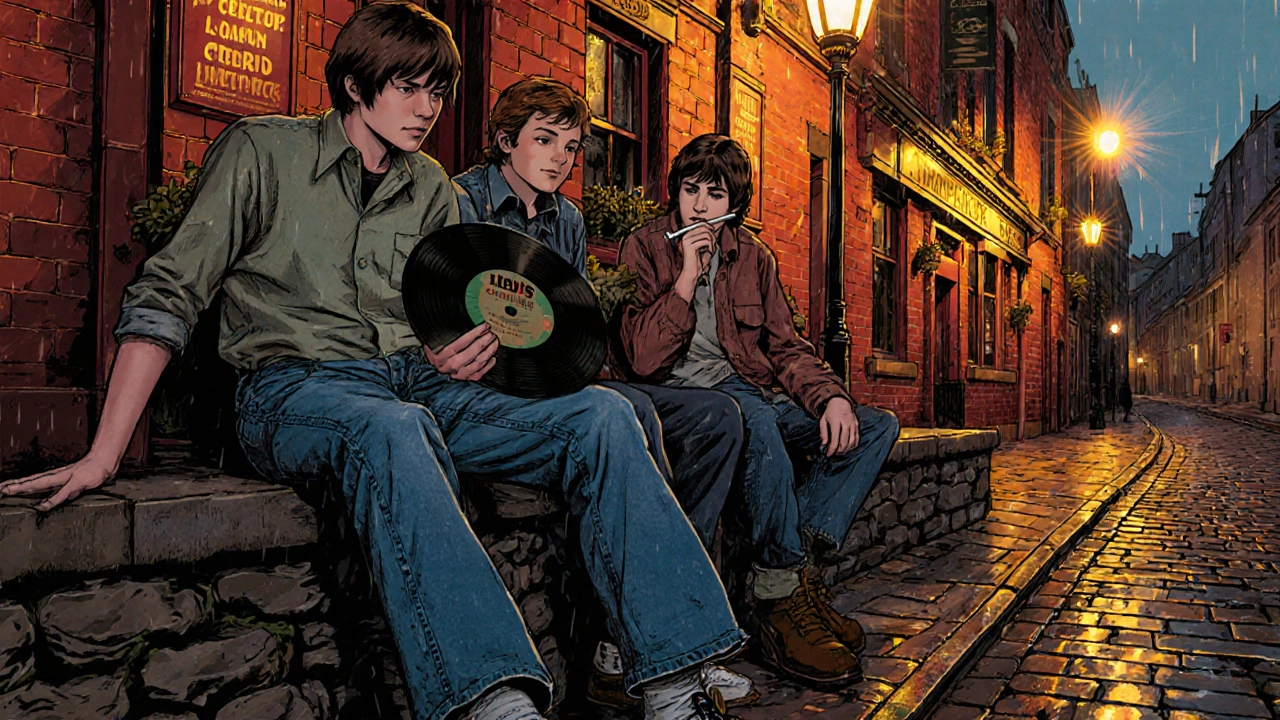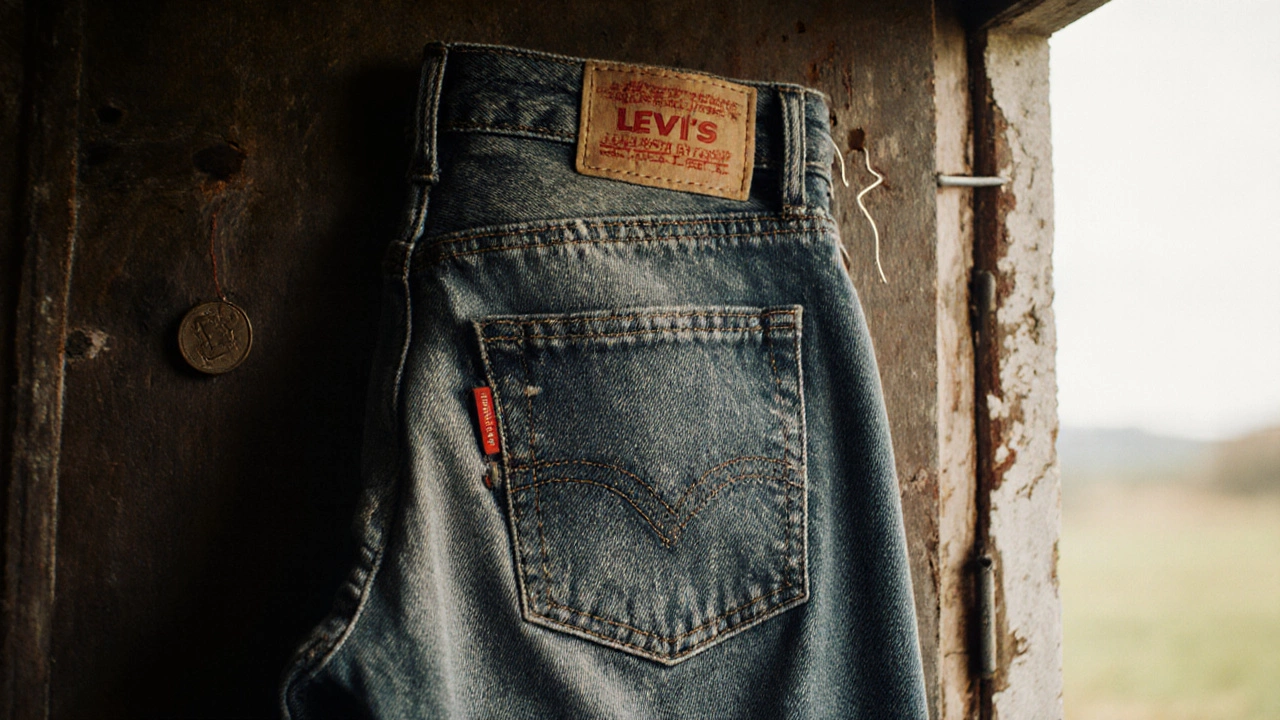In Ireland, where a good pair of jeans can survive a drizzle in Galway, a hike in the Wicklow Mountains, and a pint in a Dublin pub all in one day, denim isn’t just clothing-it’s a staple. But when you pull on those worn-in blues, have you ever wondered where they really came from? The oldest jeans brand still in business today isn’t some trendy new label from Berlin or Los Angeles. It’s Levi’s, founded in 1853 by Levi Strauss in San Francisco. And yes, that same brand has been on the backs of Irish farmers, fishermen, students, and city workers for more than 170 years.
How Levi’s Made It to Ireland
Levi Strauss didn’t set out to make fashion. He was a German-Jewish immigrant who sold dry goods-fabric, buttons, thread-to gold miners during the California Gold Rush. His breakthrough came when he teamed up with tailor Jacob Davis to reinforce work pants with copper rivets. These weren’t fancy pants; they were tough, durable, and built to last through backbreaking labor. That’s exactly what Irish immigrants needed when they landed in America in the 1850s and 60s. Many came with nothing but their clothes on their backs. Once they found work, they needed pants that wouldn’t tear at the knees. Levi’s riveted denim was the answer.
By the 1880s, these same jeans made their way back across the Atlantic-not as imports for the wealthy, but as practical gear for Irish laborers. Fishermen in Kinsale, quarry workers in Cork, and coal miners in County Tyrone started wearing them. Why? Because they didn’t rot in the damp, didn’t fray after weeks of hard use, and could be mended with a needle and thread. Even in the 1950s, when denim became a symbol of rebellion in the U.S., Irish teenagers in Limerick and Derry quietly adopted them. They weren’t copying Hollywood-they were just being smart.
Why Other Brands Don’t Hold Up
There are plenty of old denim names you might have heard of: Lee, Wrangler, Dickies. But none of them predate Levi’s. Lee was founded in 1889, Wrangler in 1904. Both made great workwear, but they came decades after Levi’s had already built a reputation for durability. In Ireland, where the weather is as unpredictable as a Dublin bus schedule, that early head start mattered. A pair of Levi’s 501s from the 1920s might still be hanging in a closet in Clonmel. You’ll find them in thrift stores in Temple Bar, in attics in Sligo, and even in the back of a shed in Donegal, still holding their shape after 70 years.
Some Irish brands tried to compete. In the 1970s, a small Dublin-based company called Irish Denim Co. made a run at the market with locally woven cotton. They had a nice logo-a harp woven into the back pocket-but they couldn’t match Levi’s stitch quality or the tightness of the weave. Within five years, they folded. Meanwhile, Levi’s kept shipping in bulk to Dublin’s wholesale distributors. By the 1980s, every hardware store in Ireland stocked them alongside hammers and nails.

The Irish Love for Classic Fit
Today, in Ireland, you won’t see many people wearing skin-tight skinny jeans unless they’re heading to a festival in Wexford. Most stick to the original 501s-the straight leg, mid-rise, button-fly style. Why? Because they’re comfortable under a wool coat in winter, easy to roll up for a walk along the Cliffs of Moher, and don’t ride up when you’re climbing over stone walls in the Burren. Even in Galway, where fashion trends move fast, the 501 remains the default. Locals know: if you want jeans that last through a decade of rain, mud, and pub floors, you go with the original.
Levi’s still ships to Ireland through their official distributor, Irish Retail Group, based in Cork. You’ll find the full range in Dunnes Stores, Penneys (Primark), and independent boutiques in Limerick and Waterford. But the real treasure? The secondhand shops. In Belfast’s Markets, in Galway’s Spanish Arch, in Dublin’s George’s Street Arcade-you’ll find vintage Levi’s from the 1960s and 70s, often with original stitching, faded just right, and priced under €20. Many of these were brought home by Irish emigrants who worked in the U.S. and returned with their best pair tucked in their suitcase.
What Makes Levi’s the Oldest-and Still the Best?
It’s not just age. It’s consistency. Levi’s has never abandoned its core product. Even as other brands chased trends-baggy jeans, acid wash, ripped knees-Levi’s kept making the 501 the same way. The same copper rivets. The same red tab. The same selvedge denim woven on old shuttle looms in North Carolina. In Ireland, where tradition matters-whether it’s a Sunday roast or a ceilidh dance-that consistency earns trust.
There’s also the matter of repair. Levi’s has repair centers in Dublin and Cork. You can take your worn-out pair, and they’ll replace the zipper, patch the knees, or re-dye the fabric. In a country that still remembers rationing in the 1940s and the economic hardship of the 1980s, fixing things isn’t a trend-it’s a habit. Levi’s understands that. Other brands sell you a new pair every season. Levi’s lets you keep the same one for life.

How to Spot Real Vintage Levi’s in Ireland
If you’re hunting for old Levi’s in Irish thrift shops, here’s what to look for:
- Red Tab: Pre-1970s Levi’s have a red tab with the word “LEVI’S” in all caps, no trademark symbol. After 1971, they added the ®.
- Arcuate Stitching: The double-arch stitch on the back pockets. Early versions had thicker, uneven lines-hand-sewn before machines took over.
- Button Fly: If it’s a zipper, it’s post-1954. The original 501s were all button.
- Inner Tag: Look for the “Levi Strauss & Co.” label. Early ones had a small “E” above the “S” in Levi’s.
- Denim Weight: Vintage denim is heavier-14 to 16 ounces. Modern jeans are lighter, often 10 to 12 ounces.
Find a pair with these features? You’ve got a piece of history. And in Ireland, where the past is never far away, that’s worth holding onto.
Why This Matters in Today’s Ireland
Levi’s isn’t just the oldest jeans brand. It’s a symbol of resilience. In a country that’s seen famine, emigration, economic collapse, and global shifts, Levi’s jeans have stayed the same. They’ve been worn by people who left Ireland for America and came back with stories. They’ve been worn by students protesting in the 1970s, by farmers in Mayo, by musicians in Doolin. They’ve survived because they were made to last-not because they were trendy.
Today, as Ireland pushes for sustainability and circular fashion, Levi’s repair program and vintage resale market fit right in. You don’t need to buy new. You just need to know where to look. And if you want to wear something that’s stood the test of time-just like Irish pubs, stone walls, and rainy Sundays-then the oldest jeans brand still standing is the one you want.
Is Levi’s the only old jeans brand still around?
Yes, Levi’s is the oldest continuously operating jeans brand. Other brands like Lee and Wrangler came later. Some older denim makers, like the American company White Oak or French brand Denim de Gennes, have shut down or changed ownership. Levi’s has maintained the same factory standards, product line, and global distribution since 1853.
Are vintage Levi’s worth buying in Ireland?
Absolutely. Vintage Levi’s from the 1950s-1980s are more durable, better made, and often fit better than modern mass-produced jeans. In Ireland, you can find them in thrift stores like Oxfam, St. Vincent de Paul, and local charity shops in Cork, Galway, and Limerick. Prices range from €15 to €50, depending on condition. They’re also more sustainable-buying one saves a new pair from being made.
Can I get my Levi’s repaired in Ireland?
Yes. Levi’s has official repair partners in Dublin and Cork. You can drop off your jeans at select Dunnes Stores or send them directly to their repair center in Cork. They fix zippers, re-dye faded denim, patch knees, and even replace the red tab. The service costs around €20-€40, depending on the work. It’s cheaper than buying new-and it keeps your jeans in the family for another generation.
Why do Irish people prefer straight-leg jeans?
Because they work. Straight-leg jeans fit over boots, don’t ride up when you’re walking hills, and layer easily under wool coats. In a country where outdoor activity is part of daily life-from hiking in the Wicklow Way to walking the dog in Phoenix Park-comfort and practicality win over fashion trends. The 501 is the unofficial uniform of Irish winters.
Are Levi’s made in Ireland?
No. Levi’s jeans are manufactured in countries like Mexico, Turkey, Sri Lanka, and Vietnam. However, Levi’s has had a strong presence in Ireland since the 1960s, with distribution hubs in Dublin and Cork. While no Irish factories produce Levi’s, many Irish people have worn them for generations, making them part of the local fabric-literally and culturally.
